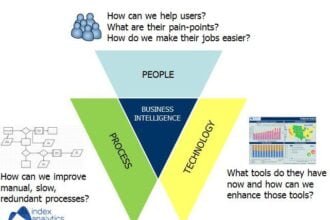No good business succeeds without analytics. In basic terms, this can be as simple as measuring a store’s walk-ins versus converted customers, or analyzing period earnings year over year. However, in the rapidly growing mobile market a different brand of information is being used to empower developers.
No good business succeeds without analytics. In basic terms, this can be as simple as measuring a store’s walk-ins versus converted customers, or analyzing period earnings year over year. However, in the rapidly growing mobile market a different brand of information is being used to empower developers. From marketing data to game analytics, new tools are being introduced to allow software creators to gain a better understanding of user behavior, and customer experience in order to optimize audience targeting. 
Getting Started
One way to maximize your app or game’s user base is to partner with a mobile marketing service. There are numerous options available, but any reputable provider should include the following:
- A practical online dashboard interface.
- Optional support for both in-app messaging as well as push notifications.
- Easy-to-use, robust analytics and visual data interpretation.
A good dashboard is the starting point, allowing you to build and manage your campaign, as well as providing access to performance reporting. It is important that these reports contain effective, actionable information, presented in a fashion that is easy to interpret for best results.
In-app messaging, or native app content, refers to notifications displayed to users who are actively engaged in your app or game. This type of exposure is more contextual and subtle, allowing developers a way to fine-tune a promotional strategy. Conversely, push notifications are more urgent in conveying your message, “pushing” messages directly to a user’s screen regardless of whether they are running your software at that moment.
Pertinent Data
Building a user base can be a challenging prospect, but securing the right data is half the battle. The type of information that can be gleaned from quality analytics will relate to users’ habits: how often they load your app, for how long they use it, and how inclined that person is to make in-app purchases. By analyzing these behaviors, developers have a greater ability to tailor the right type of advertising to the right type of user.
Factors to Consider
While employing a mobile marketing service can be a winning strategy for many app developers, there are several things to keep in mind in order to ensure a successful integration:
- Research the software development kit first. Not all SDKs are created equal, so perform your due diligence to be sure that the implementation process won’t be a burden for your engineers.
- Verify support for your platform. Android and iOS are the two more common platforms for smartphones, and generally receive wide support from third parties—but it’s always good to double-check before you inadvertently start down the wrong path.
- Don’t overdo it. Mobile users are real people, with the same kind of patience and goodwill you might expect from any real person. Just because you have the ability to send marketing messages doesn’t mean you always should—strategically limit exposures to produce the greatest impact.
By achieving a better understanding of your current user base, your team stands the greatest chance not only in terms of retention, but new user acquisition as well. Just as customers represent the lifeblood of any successful business, active users are ultimately the measure of how successful your development team can be.






